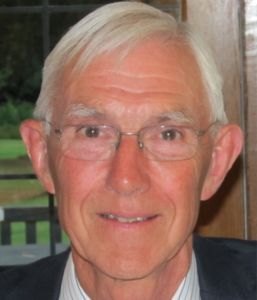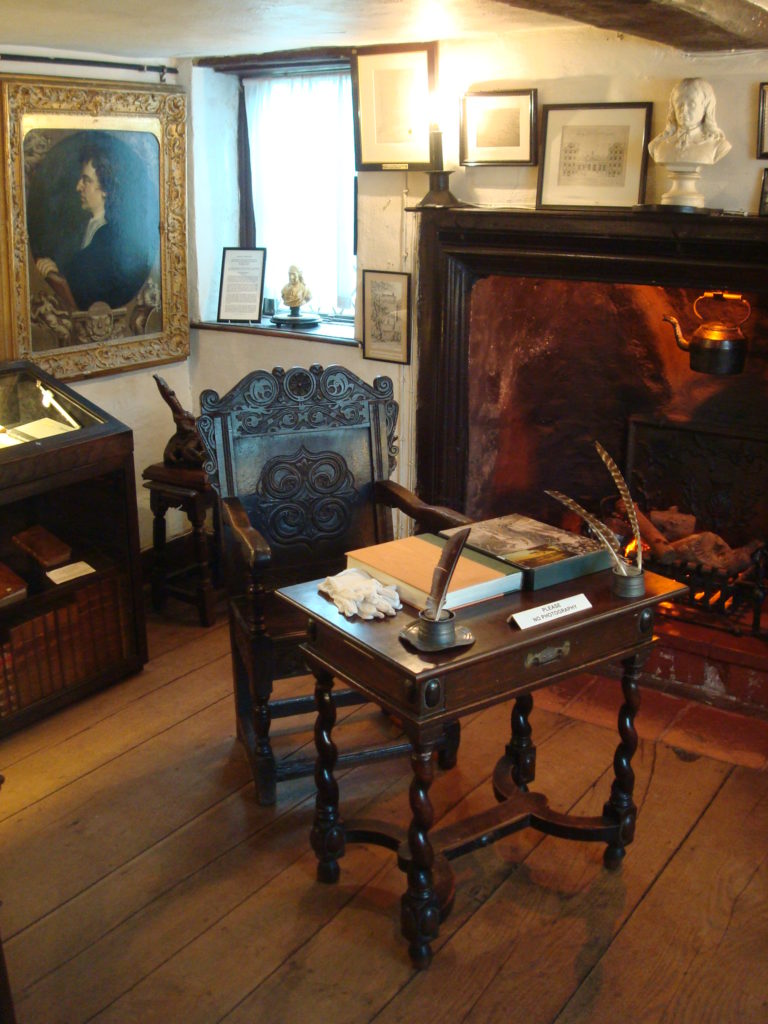
Milton’s Literary Garden: all the flowers he wrote about are here.
The stampede towards STEM is not irreversible, and not everyone who begins in science and technology stays there. Some are saved by literature in the end. Take John Dugdale Bradley, a Cambridge-trained Chartered Chemical Engineer and a Stanford MBA who now finds himself a later-life a champion of John Milton – the writer the Stanford’s late Prof. Martin Evans called the most learned poet in the English language.

He began as a neighbor
But the Stanford graduate began as a neighbor first. He and his wife moved to a cottage a few minutes away from Milton’s Cottage in Buckinghamshire. As he visited the cottage regularly, he got to know the man whose spirit still haunts it. From small beginnings he gradually became more involved in saving this literary jewel. Now as a Trustee he is leading the effort to raise a $5 million Endowment Fund to generate income to operate, preserve and enhance the cottage, museum, and literary garden in perpetuity. This mission includes the dissemination of Milton’s legacy and his eloquent promotion of all the freedoms we enjoy today. He spoke at Stanford recently, and so the Book Haven invited him to tell us about the cottage in a guest post.

Where Milton wrote “Paradise Lost.”
In 1665, John Milton fled London’s Great Plague with his wife and daughters. It was the last major outbreak of the bubonic plague in England. He sought safety in a small, rural, secluded cottage in Chalfont St. Giles, about 25 miles northwest of the heart of London. It is the only Milton residence that survives today. Within these walls he completed Paradise Lost and was inspired to write its sequel, Paradise Regain’d. These late, great works ensured his enduring poetic legacy and universal recognition as one of the world’s greatest writers.
In the study, Milton, who had become blind, completed Paradise Lost by dictating to his wife or daughters every day. Here are rare first editions of Paradise Lost and Paradise Regained on public display along with the first illustrated edition of Paradise Lost and some 200 translations into many languages.
In the museum’s old kitchen, displays many of his other works including Areopagitica and Lycidas, the romantic poem lamenting ‘a promising young life cut short’ in tribute to this college friend Edward King of Christ’s College Cambridge.
The parlour where Milton received his guests and where he encouraged debates on the issues of the day contains his parliamentary works including the ‘Tenure of Kings and Magistrates’ [published in support of and shortly after the execution of King Charles I] and a Proclamation from King Charles II calling for Milton’s most controversial books to be handed in and burnt. Other works are about divorce and ‘the Irish question.’

Where Milton received guests and (we hope) kept warm.
Alongside the cottage, is a registered Grade 2 literary garden is filled with most of the trees, shrubs, plants and herbs mentioned in Milton’s works. The garden is worth a visit in its own right.
As well as early editions of his best-known poetic works, including Lycidas, Paradise Lost and Paradise Regain’d, the cottage includes a treasure-trove of his iconic prose writings, many of which focus on freedoms in government, religion, speech and the press. Thomas Jefferson and John Adams both revered Milton, and so the Puritan poet found a significant place in American history; his thinking and writings (particularly Areopagitica) influenced the development of the U.S, Constitution and later the First Amendment dealing with freedoms we all cherish – freedom of thought, of speech and of the press as well as religion.
 And an unknown American may have inadvertently saved Milton’s Cottage for posterity. Rumour has it that the building was to be sold, to be shipped to the US and rebuilt there, beam by beam – so incensing the locals that they clubbed together to purchase Milton’s Cottage on behalf of the nation and keep it firmly on British soil. That was back in 1887 and it has been in the care of a charity and open to the public as a museum ever since.
And an unknown American may have inadvertently saved Milton’s Cottage for posterity. Rumour has it that the building was to be sold, to be shipped to the US and rebuilt there, beam by beam – so incensing the locals that they clubbed together to purchase Milton’s Cottage on behalf of the nation and keep it firmly on British soil. That was back in 1887 and it has been in the care of a charity and open to the public as a museum ever since.
Milton’s Cottage has no permanent endowment, however – a state of affairs that the current Board of Trustees is determined to address. We have therefore launched Paradise Maintain’d, a new endowment fund that is seeking to raise $5 million to protect and preserve this unique literary landmark in perpetuity. Once we reach our target, the income generated will cover all of our annual core and maintenance costs as well as fund new initiatives to increase public engagement with Milton’s work.
To find out more, please visit our website here. US donations are tax deductible: contact endowments@miltonscottage.org for further information.
Oh! And more news! The Book Haven will be visiting the Milton Cottage on site come March, when I will be honored with the inaugural residency. More from the Milton Cottage then!



January 22nd, 2018 at 6:13 pm
Congratulations, Cynthia!
After the execution of Charles I Milton published The Tenure of Kings and Magistrates (not Kinds).
January 22nd, 2018 at 7:31 pm
Thanks for the correction, Bill!
January 22nd, 2018 at 11:10 pm
Not to pile on, but… Milton’s Cottage was purchased by the incensed villagers for posterity, not prosperity; and either it’s been in the care of a charity since 1887, or it has been in the care of a charity since 1887, but those two constructions are unhappy together in the text. Now that I have that off my chest, let me say: congratulations on being the inaugural resident! Well and truly deserved, Cynthia. Count me among the officially Green With Envy!
January 24th, 2018 at 11:01 am
We seem to have an unusual number of typos in this one. Thanks!
January 24th, 2018 at 11:38 am
Thanks to all you ardent readers. As the editor of the Chinese newspaper when questioned about the typos in his paper said, ” I would not like to take away the fun from readers who found them”! I would be delighted to offer personal tours of Milton’s Cottage if anyone is visiting our part of the world. See http://www.miltonscottage.org for details.
January 24th, 2018 at 11:47 am
Thanks for the advice and the offer, John! I like the Chinese editor’s p.o.v. And thanks for the guest post!